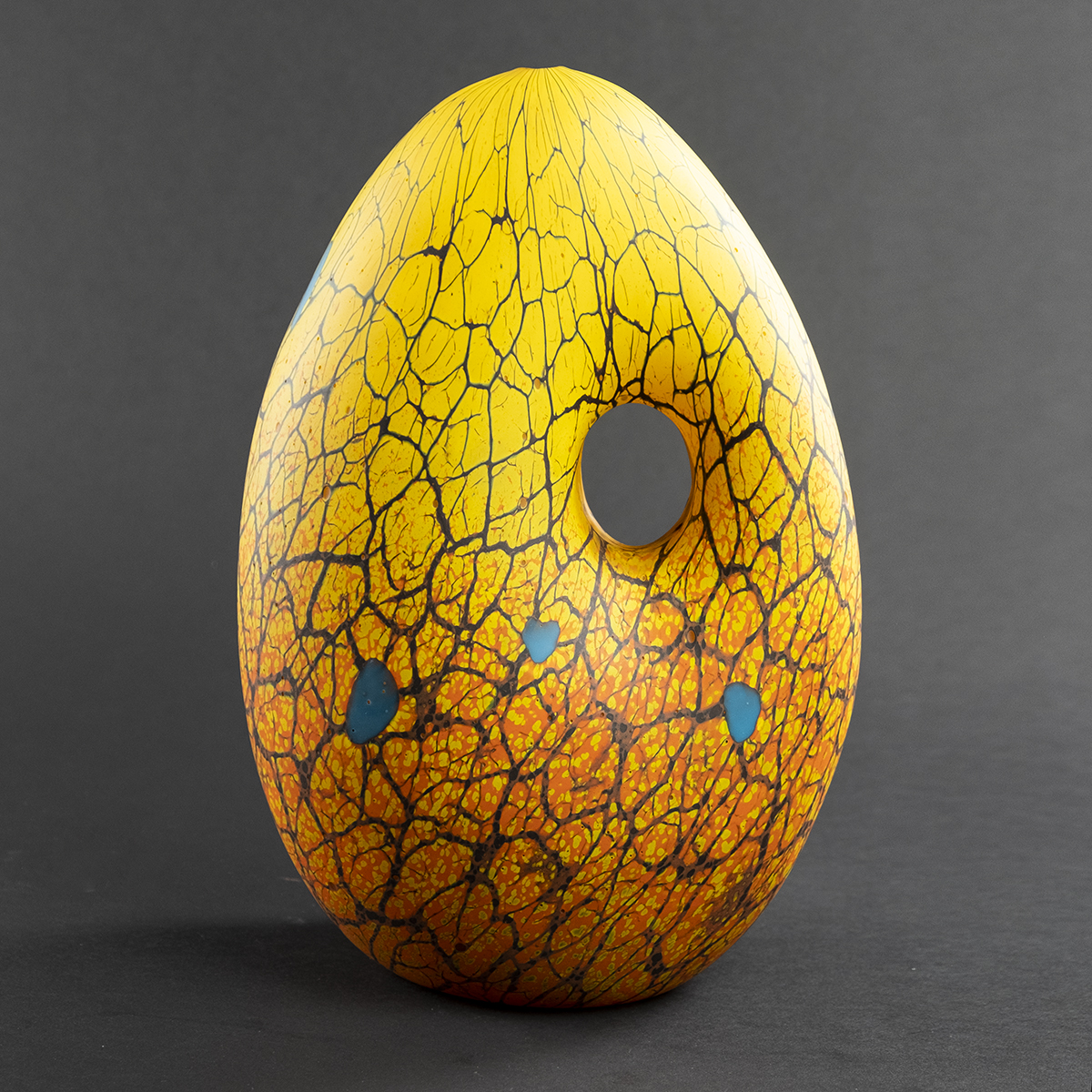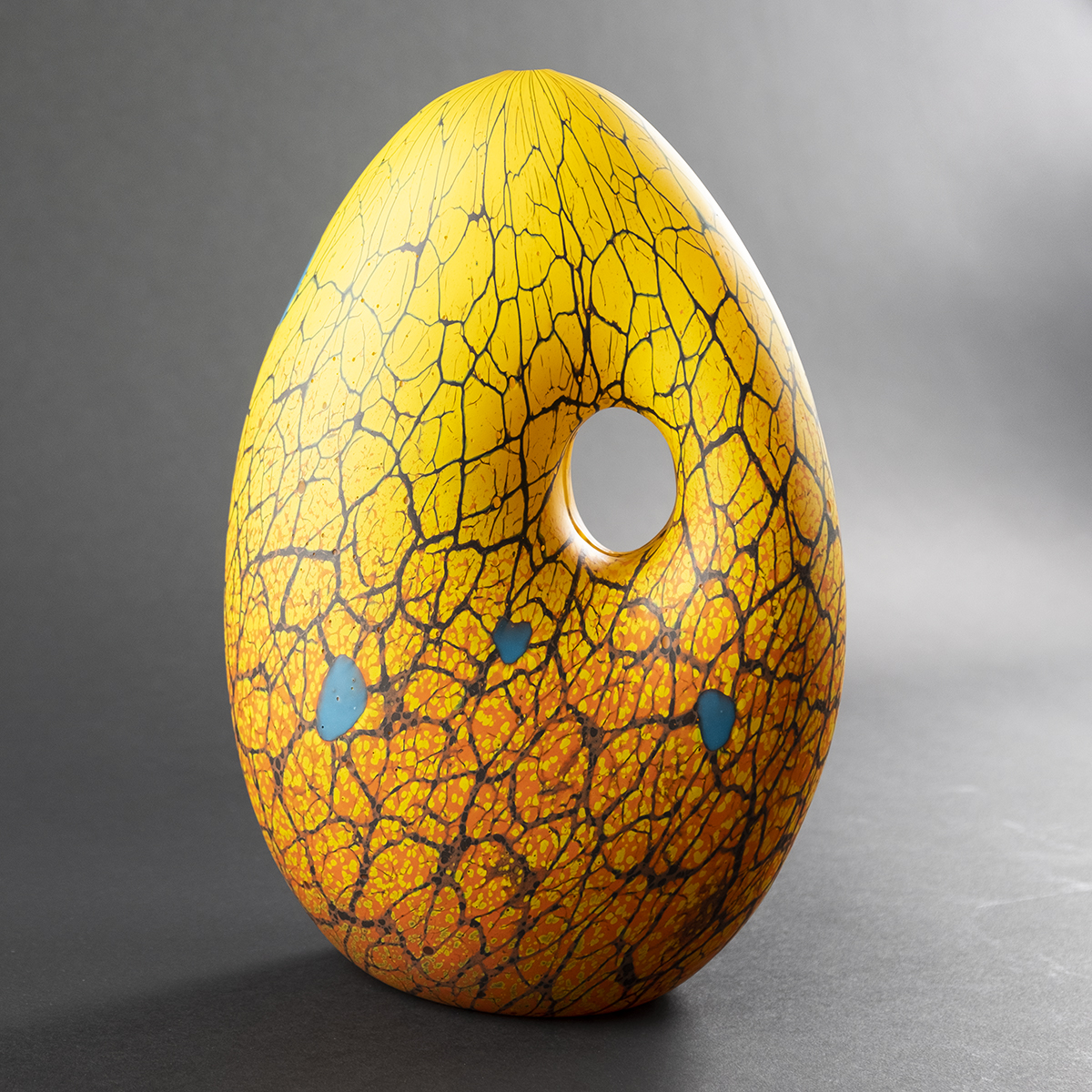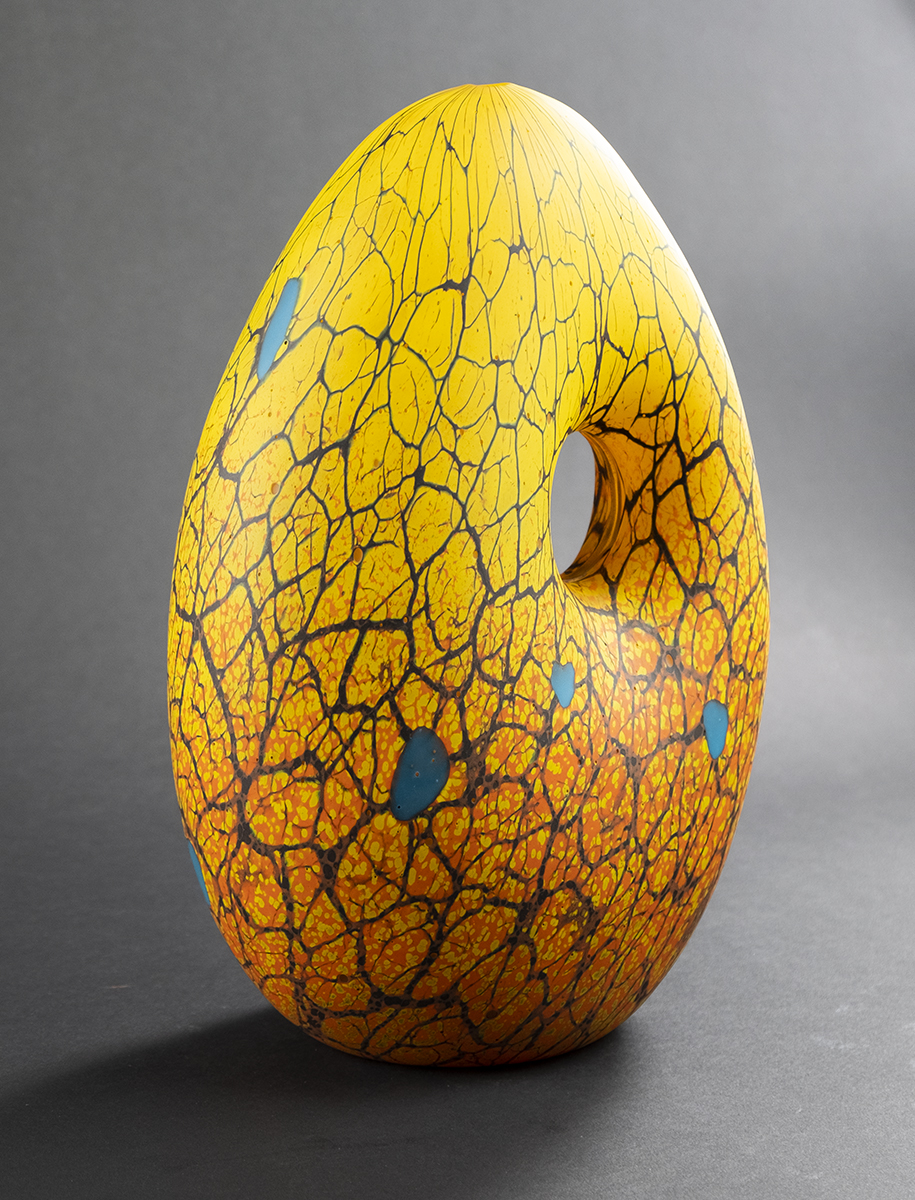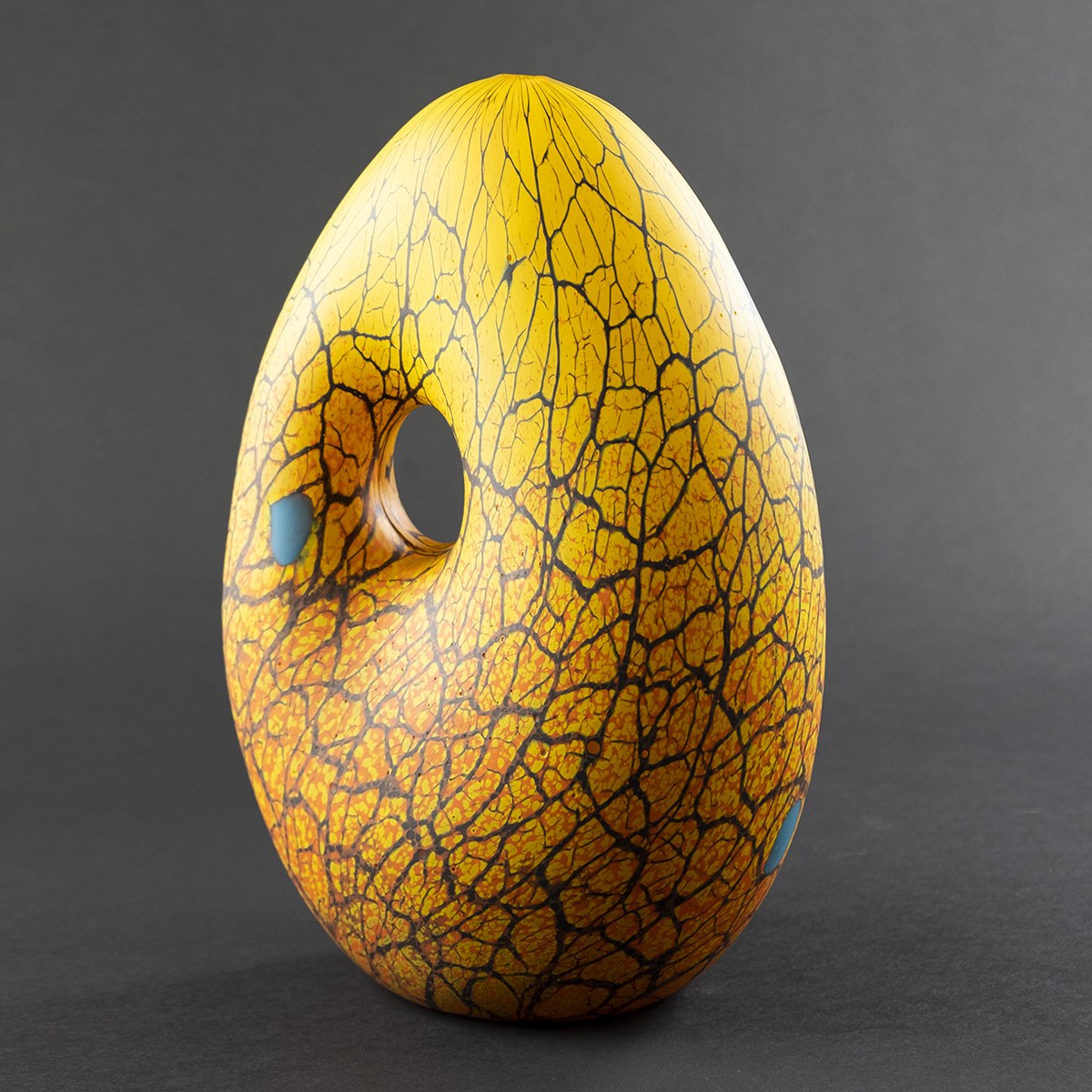Sxwo’le Anchor (Orange and Yellow)
EXHIBITION:
LuminosityThis piece is inspired by the shaped stone anchors used to hold reef nets made by ancient Lummi fishers for fishing. Reef net fishing was traditionally done by suspending a sxwo’le (pronounced suh-swole) or woven reef net between two canoes. The ancient reefnet, made of the inner bark of cedar, willow saplings, and sometimes nettles, was laid underwater near the bottom and sloped towards the surface. On meeting the angled false “sea floor” of the ramp, which was strung with sea grass to create a false bottom, the fish would be gently nudged up to the net proper.
The rig required great stability and precision of placement. Shaped stone anchors (tćilen) were used to anchor both the net and the canoes. The anchors were so large that they could not be retrieved, and underwater archaeological investigation of ancient reefnet sites has confirmed that hundreds or thousands of anchor stones lie on the seafloor. Dan Friday had the opportunity to view and handle tćilen and sxwo’le artifacts at a residency at the Burke Museum of Natural History and Culture, inspiring him to create tćilen.




